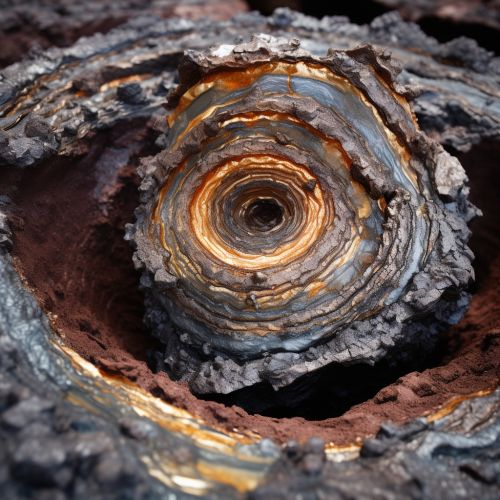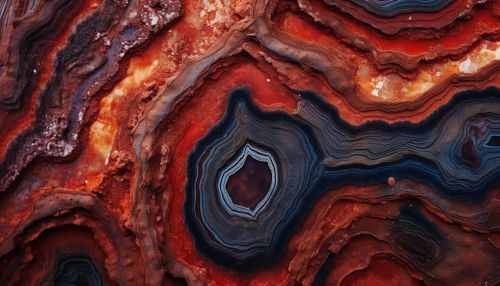Manganese nodule
Introduction
Manganese nodules, also known as polymetallic nodules, are rock concretions formed of concentric layers of iron and manganese hydroxides around a core. The core may be formed from the microscopic remains of organisms, sediment particles, or even from fragments of older nodules. These nodules are found in vast quantities scattered across the seafloor, particularly in the Pacific Ocean, and are considered a significant potential source of metals such as copper, nickel, and cobalt.


Formation
The formation of manganese nodules is a complex process that involves the interaction of biological, chemical, and physical processes in the deep-sea environment. The primary mechanism for nodule formation is the precipitation of metal-rich layers around a nucleus, driven by the reduction of manganese (IV) and iron (III) at the nodule surface. This process is influenced by the availability of dissolved metals in the seawater, the presence of suitable nucleation sites, and the conditions of the deep-sea environment, including temperature, pressure, and the presence of microorganisms.
Composition and Structure
Manganese nodules are composed primarily of manganese and iron, but they also contain significant quantities of other metals such as copper, nickel, and cobalt. These metals are present in the form of oxides, hydroxides, and sulfides, and are arranged in concentric layers around the nodule core. The structure of the nodule is highly variable, with differences in size, shape, and internal structure reflecting variations in the conditions of formation.
Distribution
Manganese nodules are found in vast quantities scattered across the seafloor, particularly in the Pacific Ocean. The highest concentrations of nodules are found in the Clarion-Clipperton Zone, a region of the Pacific Ocean located between Hawaii and Mexico, where the seafloor is covered by a layer of nodules several centimeters thick. Other significant nodule fields are found in the Indian Ocean and the Atlantic Ocean.
Economic Significance
Manganese nodules are considered a significant potential source of metals such as copper, nickel, and cobalt, which are in high demand for various industrial applications. The extraction of these metals from the nodules could potentially provide a new source of these critical resources, reducing dependence on terrestrial mining and contributing to the transition to a more sustainable, circular economy. However, the technical and economic challenges of deep-sea mining, as well as the potential environmental impacts, are significant obstacles to the exploitation of this resource.
Environmental Impact
The extraction of metals from manganese nodules could have significant environmental impacts, including the disturbance of the seafloor, the release of sediment plumes, and the potential harm to deep-sea ecosystems. The deep-sea environment is poorly understood, and the potential impacts of mining activities are uncertain. As a result, there is a need for further research and careful regulation to ensure that any exploitation of manganese nodules is done in a sustainable and responsible manner.
